This is one of those cases that stays with you; that you think about even when you’re not with the horse. The initial description from the veterinarian was “Every time the owner picked out her feet she would bleed. When I saw her feet I thought, OH MY”. I get called in by veterinarians typically for one of two reasons: either the horse doesn’t have enough foot to nail to and they need performance glue work, or like in this case, the horse’s feet are significantly distorted with pathology and they need help with rehabilitation. It’s never good when the vet says “Oh my!” when they see the horse’s feet. So I was expecting a train wreck.
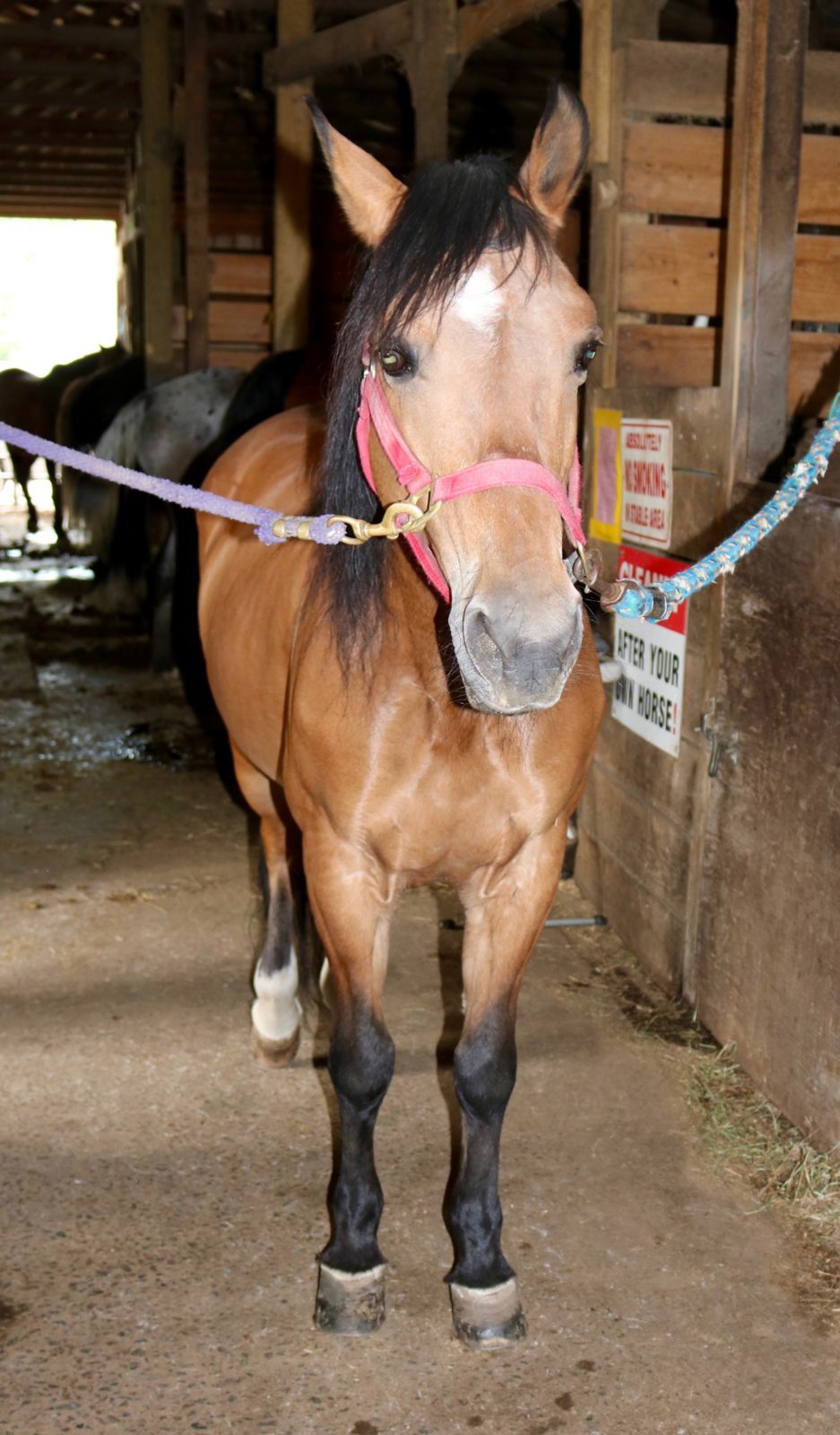
When I met this mare I thought helping her would be pretty straight forward. It ended up being a little more complicated than I was expecting. She had some significant hoof capsule distortion typically found with chronic laminitis complicated by contracted heels. All of that is pretty easy to address. My biggest concern was the description of “bleeding when her feet were picked out”, and was thinking about the coffin bone penetrating her sole or a deep abscess track in that area. Here are her feet when we first saw her:
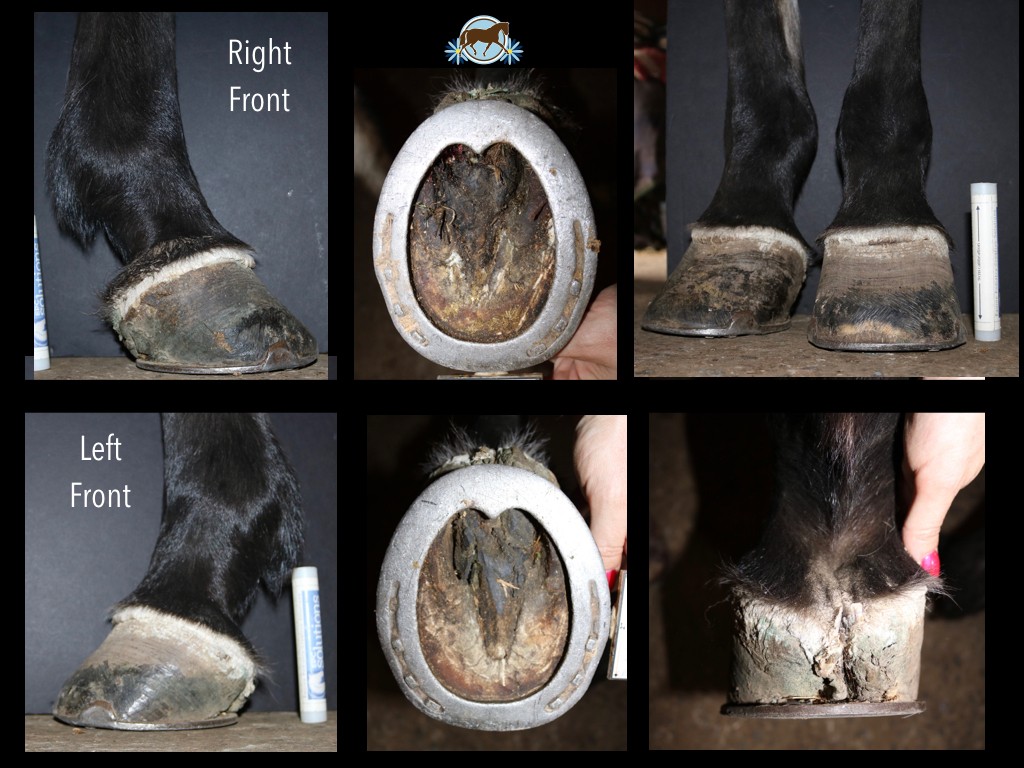
The veterinarian met us at the appointment and took radiographs for us.
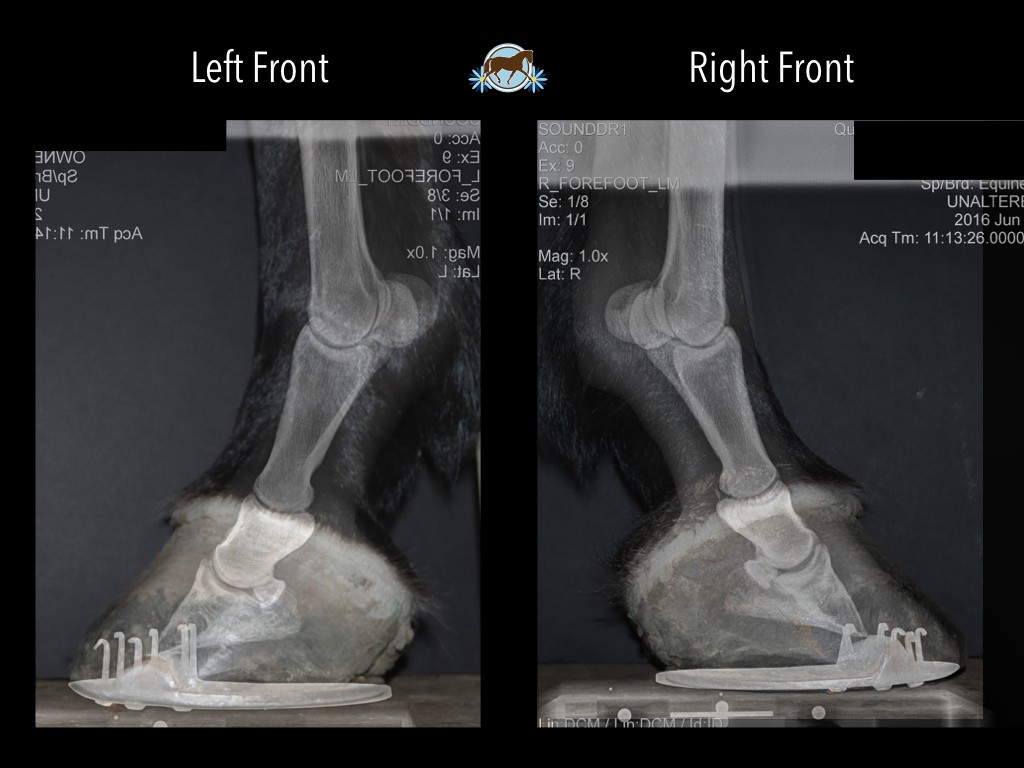
The veterinarian diagnosed the pony with chronic laminitis with rotation and sinking. Our plan was to pull the shoes, apply a de-rotation trim to re-align her hoof capsule with the internal structures, addressing the phalangeal and capsular rotation. Oh, and to figure out what the bleeding when the hoof was picked was about.
After pulling the shoes, CAREFULLY cleaning out her frogs, and applying the de-rotation trim, the bleeding was not coming from where we expected.

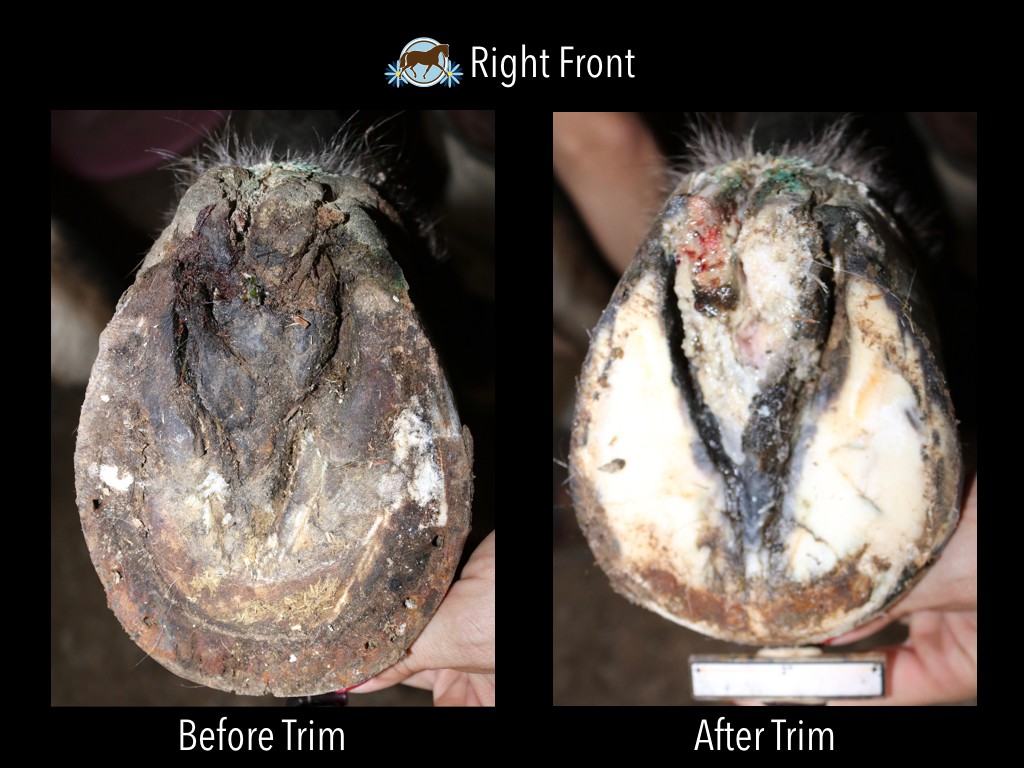
We were looking at canker. This poor mare, foundered, with contracted heels, chronic thrush, AND canker. We determined she was going to need daily attention to her feet to eliminate the canker, and help her regain soundness. We brought her to our Daisy Haven Farm Rehabilitation Center to facilitate her care. Of course with the additional benefit of addressing her underlying metabolic problems through diet and environmental management.
There are many different ideas on how to treat canker. We see a fair bit of it in our area with so many draft horses going though auction, as it seems most prevalent in draft breeds although occurs in all breeds. I also saw a lot of canker in Nigeria during my trips helping horses there.
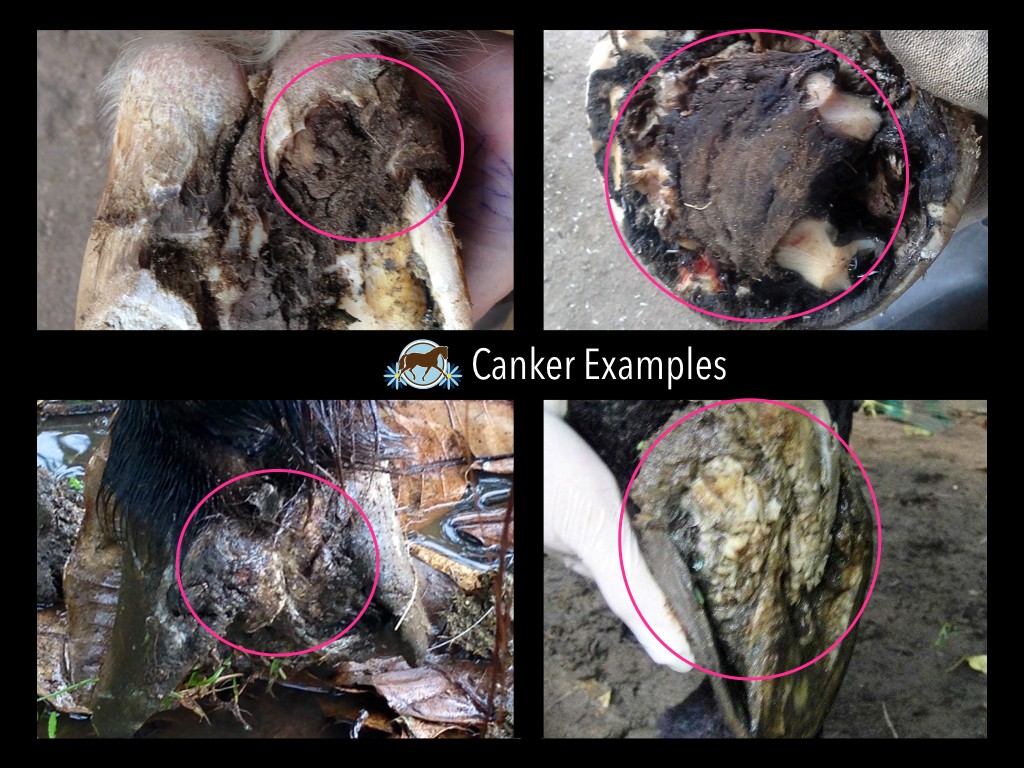
Canker is generally thought of as an infectious process that leads to a proliferation of abnormal tissue originating in the frog. Why it happens and why only to certain horses is not known, however, it is generally associated with excessively wet conditions, poor hoof management, and possibly a poor immune system. It’s described as having a cauliflower appearance, typically highly sensitive, bleeds profusely when trimmed, and often has an associated putrid smell.(1)
In this case we worked with veterinarian Dr. James Holt of Brandywine Veterinary Services in Glenmoore, PA. His go-to method of treatment for canker consists of debridement as needed, followed by topical application of oxytetracycline (oxytet) on cotton padding against the affected tissue with pressure, changing daily, then weekly Clean Trax soaks. When it looks like the canker has been eliminated, continue treatment for an additional two weeks to help prevent regrowth. We applied the oxytet to the cotton padding, wrapped the foot in a diaper with vet wrap to hold it in place. Then applied a Cloud Boot with antimicrobial powder to prevent any sweating inside the boot in our humid environment.
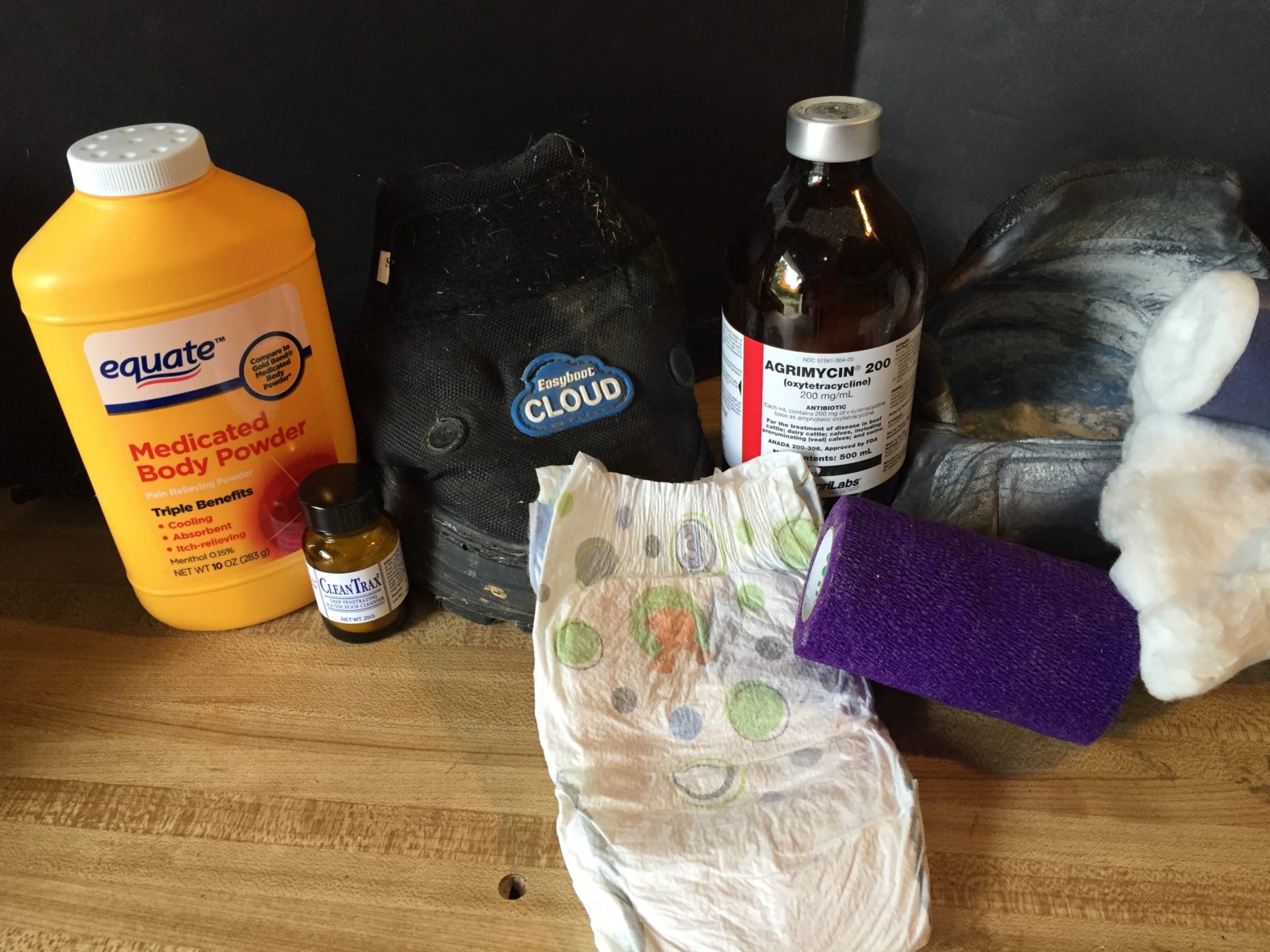
This worked quite successfully for this mare:


We were also able to get her metabolic problems controlled during her stay with us, and returned her to her owner at a new boarding barn, quite comfortable, and with a management plan in place to prevent future recurrence of either the laminitis or the canker.

References:
1: O’Grady, Stephen E., BVSc, MRCVS, and John B. Madison, VMD, Diplomate ACVS. “How to Treat Equine Canker.” Equine Podiatry. Northern Virginia Equine, 1 Jan. 2004. Web. 02 Sept. 2016. <http://www.equipodiatry.com/canker1.htm>.





